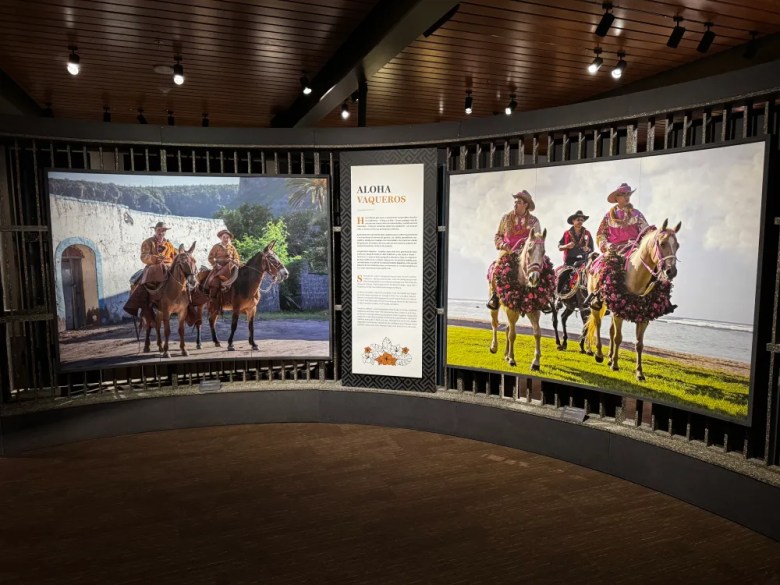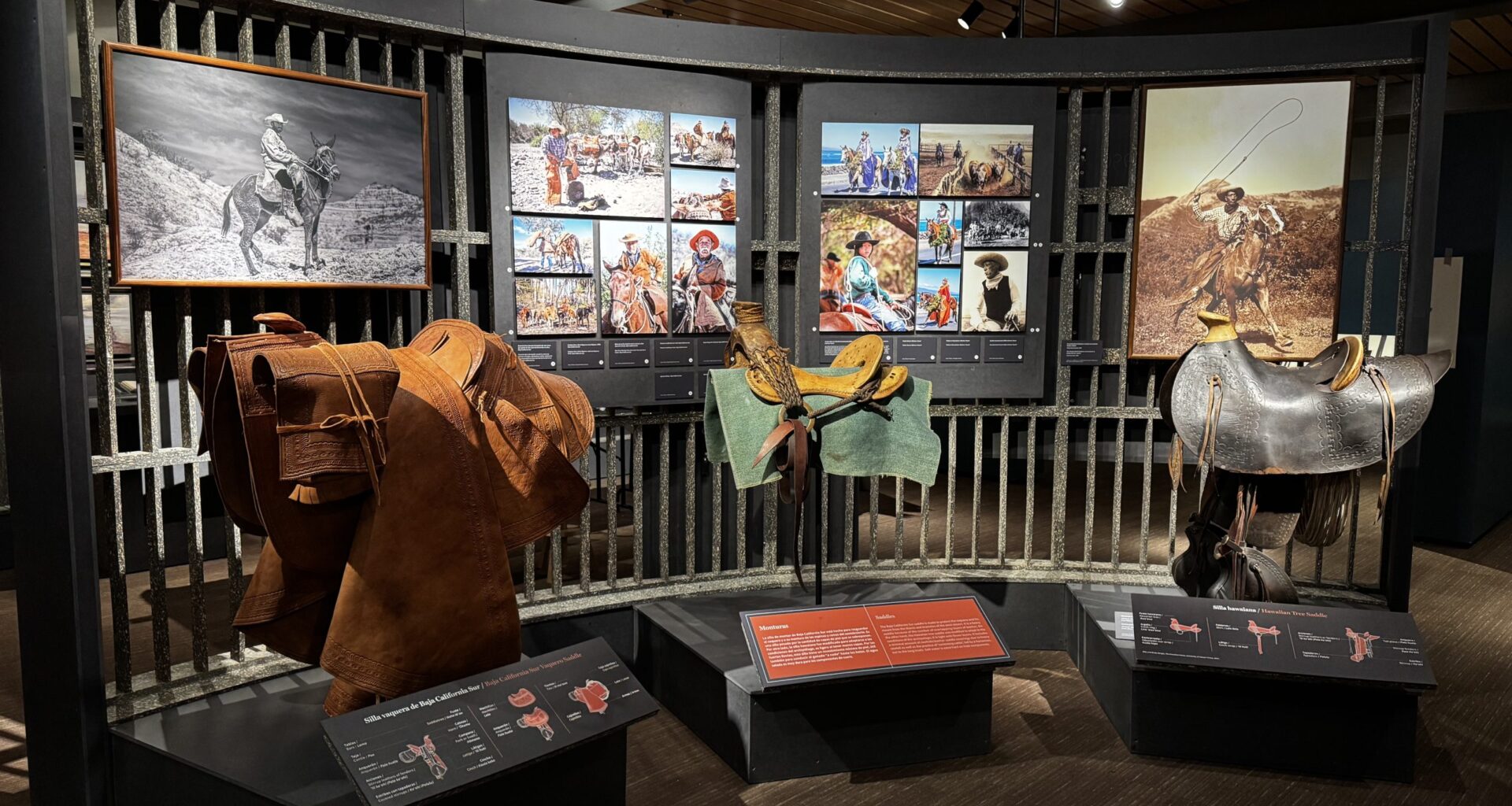This summer, the Briscoe Western Art Museum is tracing cowboy history across the Pacific with “Aloha Vaqueros,” an exhibition that explores how Mexican vaqueros influenced the development of the paniolo — Hawaiian cowboys.
On view through Sept. 1, the exhibition features art, artifacts and community programming that highlights this cross-cultural legacy and its unique place in both Hawaiian and Western cowboy history.
Developed in partnership with the Museo del Vaquero de las Californias, “Aloha Vaqueros” traces the journey and influence of Mexican horsemen across the Pacific — from their invitation by King Kamehameha III in the 1830s to help manage Hawaii’s growing cattle population, to the formation of the paniolo identity, a distinct blend of Mexican and Native Hawaiian culture that endures today.
Visitors of all ages are invited to experience interactive elements such as leather braiding, learning paniolo slang and a photo station designed to bring the world of the island cowboy to life.
The exhibit features bilingual panels, saddles, clothing and personal stories that illustrate the shared techniques and values of both cultures.
 The entrance to the “Aloha Vaqueros” exhibit at the Briscoe Western Art Museum displays images of Mexican vaqueros, left, and Hawaiian paniolos, right. Credit: Courtesy / Briscoe Western Art Museum
The entrance to the “Aloha Vaqueros” exhibit at the Briscoe Western Art Museum displays images of Mexican vaqueros, left, and Hawaiian paniolos, right. Credit: Courtesy / Briscoe Western Art Museum
Beyond the displays, the Briscoe at 210 W. Market St. is hosting a full summer of programming, including film screenings, art workshops and cultural celebrations.
On Tuesday, the museum screened Paniolo O Hawai’i: Cowboys of the Far West, an award winning documentary exploring the legacy of the paniolo, narrated by Willie Nelson.
The event included performances from local Pacific Islander heritage group Nā Mamo and dances from the Hula Hālau Ohana Elikapeka school of dance.
Isabella Park, a member of Nā Mamo and instructor for Hula Hālau ʻOhana Elikapeka, said the group’s performance is rooted in music written during the height of paniolo life in Hawaii.
“The history that’s in that exhibit are where the songs we will be dancing to come from — written around campfires, made about these people and their lives at that time,” Park said.
Park said the cultural blend represented in Aloha Vaqueros mirrors the backgrounds of many in the Pacific Islander diaspora in San Antonio.
“A lot of us have that mix,” she said. “This exhibit really reflects that. Just to share our culture — you can come learn about your culture and learn a bit about mine.”
The exhibit has also resonated with the broader public.
“Most people are surprised to hear that vaqueros sailed to Hawaii and how the paniolo culture evolved thanks to the traditions the vaqueros shared with them,” said Dawn Robinette, director of marketing and communications at the Briscoe, in an email.
“Aloha Vaqueros” runs through Sept. 1, with upcoming events including a July 10 painting workshop, the museum’s annual National Day of the Cowboy on July 26, and a Hawaiian Hoedown closing celebration on Aug. 28.
Guests who wear a Hawaiian shirt or lei receive $2 off general admission through the end of the exhibit. The museum is open 10 a.m. to 8 p.m. on Thursdays, from 10 a.m. to 5 p.m. Friday through Monday; and closed on Tuesdays and Wednesdays.
